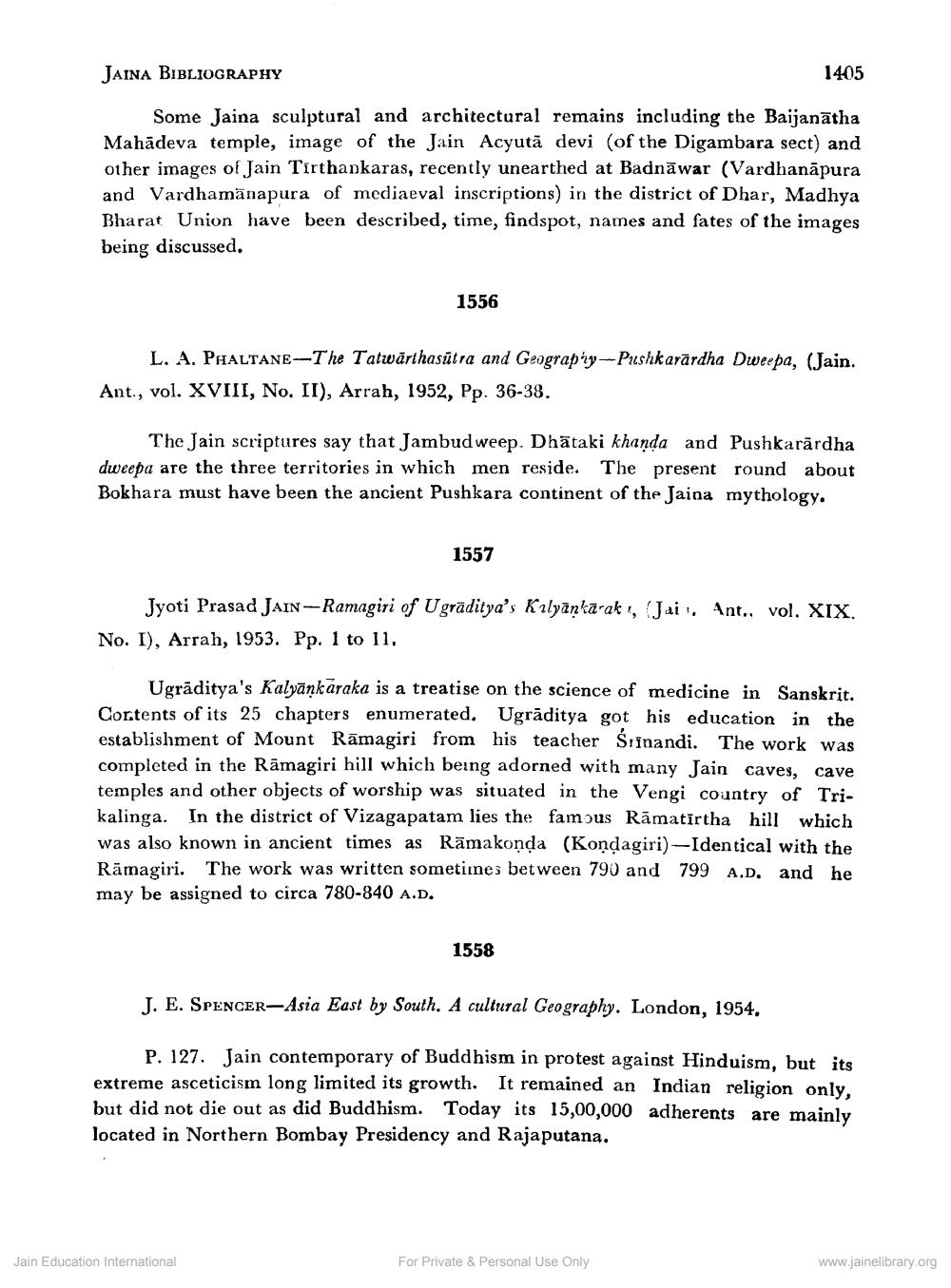________________
JAINA BIBLIOGRAPHY
Some Jaina sculptural and architectural remains including the Baijanatha Mahadeva temple, image of the Jain Acyuta devi (of the Digambara sect) and other images of Jain Tirthankaras, recently unearthed at Badnawar (Vardhanapura and Vardhamanapura of mediaeval inscriptions) in the district of Dhar, Madhya Bharat Union have been described, time, findspot, names and fates of the images. being discussed.
1556
L. A. PHALTANE-The Tatwärthasutra and Geography-Pushkarardha Dwerpa, (Jain. Ant., vol. XVIII, No. II), Arrah, 1952, Pp. 36-38.
The Jain scriptures say that Jambud weep. Dhätaki khanda and Pushkarärdha dweepa are the three territories in which men reside. The present round about Bokhara must have been the ancient Pushkara continent of the Jaina mythology.
1557
1405
Jyoti Prasad JAIN-Ramagiri of Ugraditya's Kalyankarat, Jai. Ant.. vol. XIX. No. I), Arrah, 1953. Pp. 1 to 11.
Jain Education International
Ugråditya's Kalyankaraka is a treatise on the science of medicine in Sanskrit. Contents of its 25 chapters enumerated. Ugråditya got his education in the establishment of Mount Ramagiri from his teacher Śrtnandi. The work was completed in the Ramagiri hill which being adorned with many Jain caves, cave temples and other objects of worship was situated in the Vengi country of Trikalinga. In the district of Vizagapatam lies the famous Rämatirtha hill which was also known in ancient times as Ramakonda (Kondagiri)-Identical with the Ramagiri. The work was written sometimes between 790 and 799 A.D. and he may be assigned to circa 780-840 A.D.
1558
J. E. SPENCER-Asia East by South. A cultural Geography. London, 1954,
P. 127. Jain contemporary of Buddhism in protest against Hinduism, but its extreme asceticism long limited its growth. It remained an Indian religion only, but did not die out as did Buddhism. Today its 15,00,000 adherents are mainly located in Northern Bombay Presidency and Rajaputana.
For Private & Personal Use Only
www.jainelibrary.org




